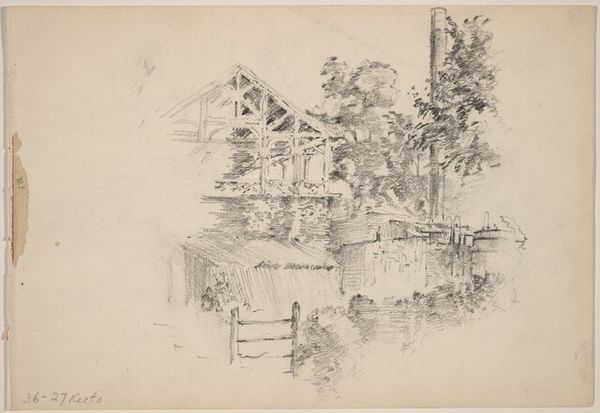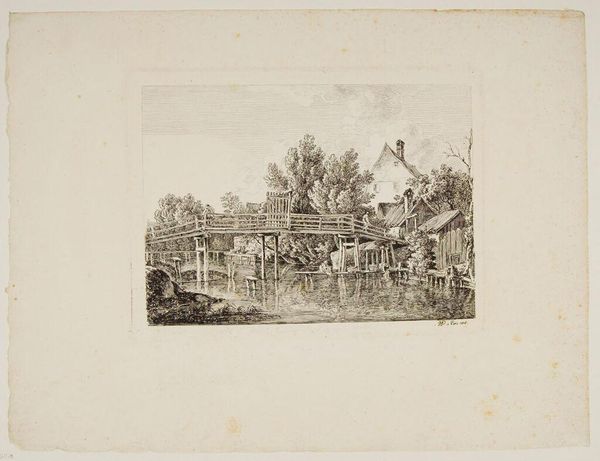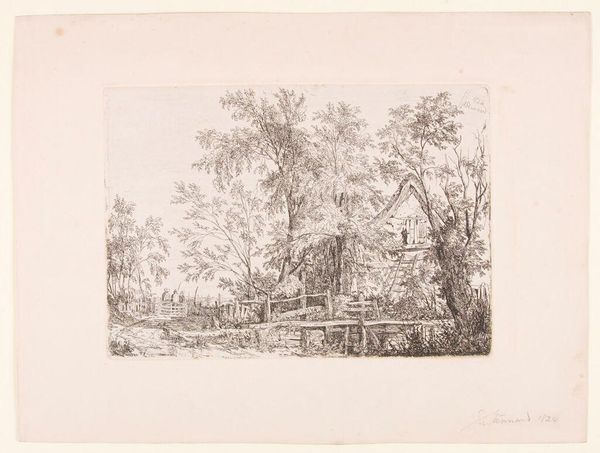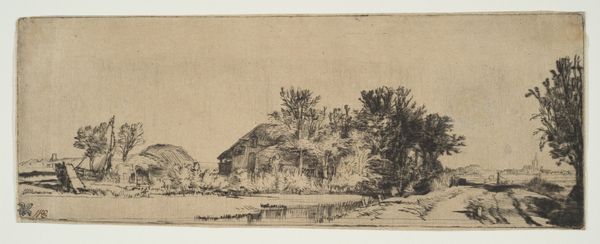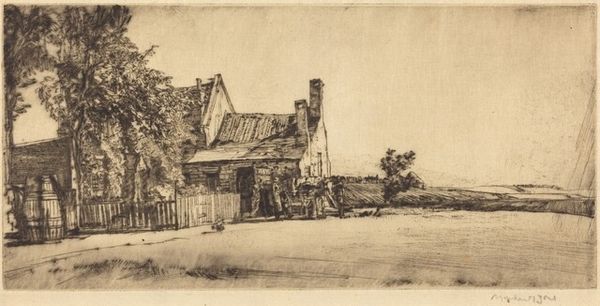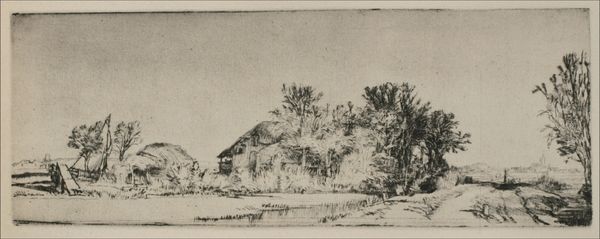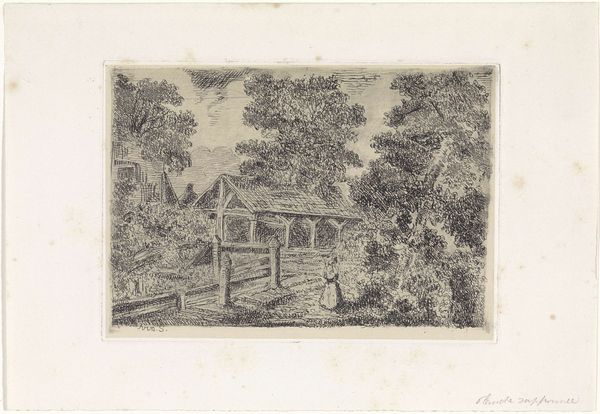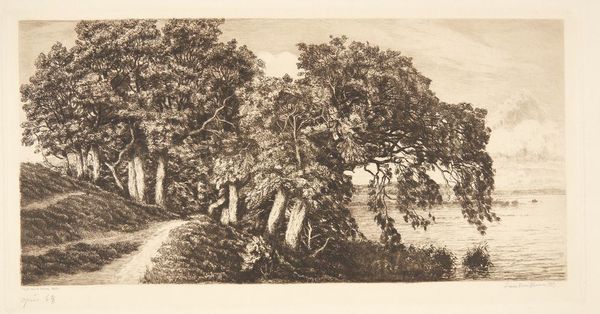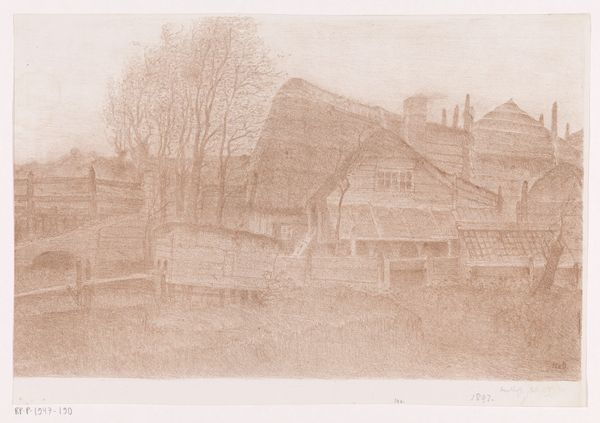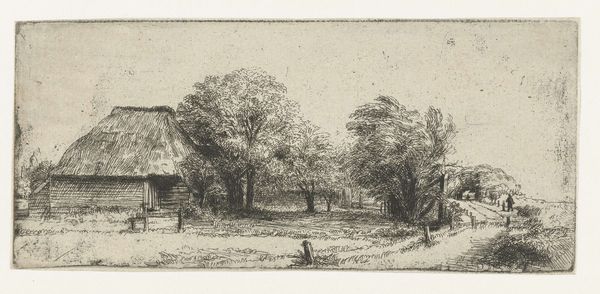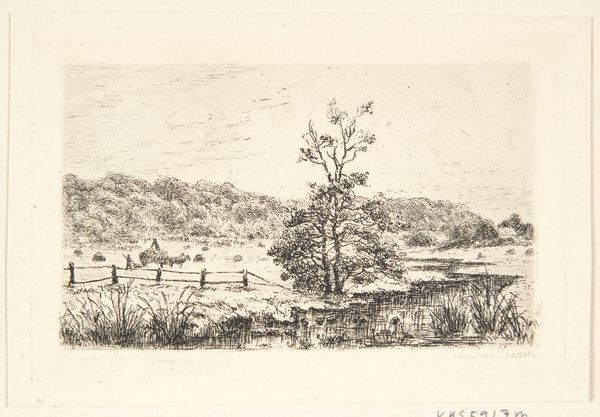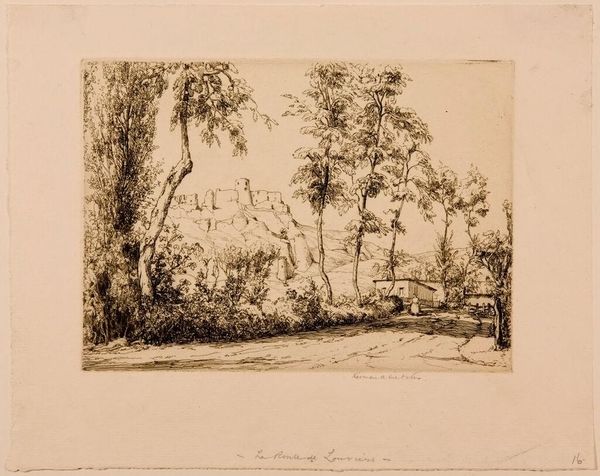
Dimensions: plate: 15.24 × 22.86 cm (6 × 9 in.)
Copyright: National Gallery of Art: CC0 1.0
Curator: This etching by Muirhead Bone, created in 1903, is titled "The Weirs, Winchester". The image depicts a serene cityscape, focusing on the architecture intertwined with natural elements. What are your initial impressions? Editor: The etching immediately gives me a sense of stillness, yet it also has a tactile quality due to the visible etched lines. It makes me wonder about the conditions under which it was made, the quality of the metal, the tools employed. Curator: I see what you mean, and in looking more closely, the scene conveys an important aspect of leisure in Edwardian England and who had access. The etching provides a moment for us to ponder the social and economic dimensions inherent in even an image of serene leisure. The workers who might've worked at this weir were not the same people enjoying this space of recreation. Editor: Exactly! The printmaking process itself is deeply tied to industrial advances and access to specialized materials like inks and plates, etching grounds. It represents a form of art enabled by labor and technology, allowing wider distribution of such a scene of leisurely life. Bone likely collaborated with professional printers; their skill contributed to the artwork's aesthetic and circulation. Curator: I appreciate your point. If we consider feminist theory and the idea of "the gaze," this print is not only an idyllic scene, but one that implicitly places the viewer within a very particular social strata. It shapes our interaction with this view. Bone’s artistry highlights how the natural is often staged or manufactured for a consumer audience. Editor: I completely agree, and this understanding makes me see that the medium in a certain way belies its supposed “natural” quality by bringing attention to the artifice required to construct it, not only through the choices made of where to sit or stand, but also of the conditions of how prints themselves are materialized, shared, and finally, received. Curator: Bringing together art history and contemporary theory can bring an enriched dialogue with an image, making it far more impactful and meaningful. Editor: Indeed. By exploring the work's material existence and relating that to its time, we find that an appreciation is expanded through considering both means and the social environments that produced such work.
Comments
No comments
Be the first to comment and join the conversation on the ultimate creative platform.
